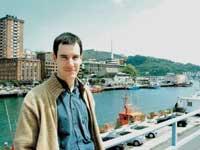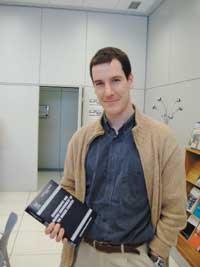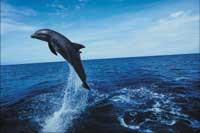Juan Cond: "We have to be optimistic. The state of the sea has improved"

In this collection we have collected many years of work. It is a large collection in which sixty-two authors have participated. And we are happy because the Dutch publisher Elsevier has published almost all major oceanography journals. Therefore, its publication is a sample of quality. On the other hand, in Euskal Herria we have been researching oceanographic matters for many years.
In the book presentation we saw oceanographer Michael Collins from Southampton Oceanography Centre. How did you contribute to this work?Michael Collins is, along with Angel Borja of AZTI, editor of the book. Collins came to AZTI a few years ago to help us improve the quality of our research. He knew those of the publisher Elsevier and he gave us the opportunity to present the book. From there, Angel has carried out the project, since he knows many people who have worked here in oceanography, work that has been for more than twenty-five years.
Normally, each researcher is limited to his area and sometimes the relationship between groups is small. But I think that in this case it has managed to form a good team. Editors have done a good partnership work.
Since when have you collected the book?It depends on the area of research. For example, if we talk about water quality, for ten years we have presented the following data, and we also begin to investigate mussels.
But other data we have published are fifteen or twenty years ago. These were not published in important journals, when they met they served to prepare reports for the Basque Government or for us, and now we have decided to include them in the book.

Yes. Fishing is always interested in its social importance. But this book has not focused on fisheries management, but on its relationship with the sea from an ecological and climatological point of view.
And what is the state of the sea?I meet what Angel Borja says. We have to be optimistic. The state of the sea has improved, especially in the last ten years. Let's do better.
It is true that XX. Until the end of the 20th century we have destroyed our coast. However, in recent years we have begun to recover, mainly because the discharges to the sea are made once purified. In this type of topic we are working a lot and the improvement is evident.
In the evolution you mentioned, is there a clear turning point from elimination to recovery or is it a matter of years?There is a turning point: the conduction of dirty water outside the estuaries and the beginning of the purification work, which has been carried out in the last ten years. This has yielded rapid results in certain variables but not in all, for example, biological communities take longer to recover compared to some physical-chemical factors, such as water oxygen. Oxygen levels vary rapidly over a year or two years. Of course, communities begin to recover since the amount of oxygen in the water increases, but they need more time. At present this improvement process is very evident in the estuaries of the Nerbioi and Oiartzun rivers.
The book includes a research proposal for the next ten or fifteen years, a research agenda. How is this work organized from now on? And why have you made that plan now?We now know a lot about most coastal areas, but we need to investigate the abyssal and continental platform. How to organize it? First you have to get money. You have to propose projects and ask for money in different places. For these jobs a lot of money is needed, because boats and many people participate. They are expensive activities.
But before asking for money you have to provide ideas for research. We have to coordinate many jobs because in AZTI we do not do all kinds of jobs. For example, for us the most interesting projects from the point of view of scientific research are those that we present to pay for the European Union. These works are coordinated with other entities, since each organization is specialized in an area. These relationships allow us to learn more about the sea and enrich our daily work.

In the book, for example, I have written the tenth chapter on microbiology. I have analyzed above all the water quality. The work collects, from the microbiological point of view, the main conclusions of the book: that we have very contaminated estuaries, such as that of the Nervión, and that from the microbiological point of view the Bidasoa is also quite bad. But, on the other hand, the improvement process is evident, and that is clearly seen, for example, in the bay of Txingudi. In Txingudi, if the improvement persists, mussel breeding or clams capture will be authorized within a year or two years, it is now prohibited by bacteriological problems.
Since you mentioned the issue of water quality, in the book you would analyze the consequences of the Prestige, right?We have collected these conclusions in the book, but we have not given them much margin, especially because when we started working the accident of the Prestige did not yet occur. When there was the biggest crisis the book was very advanced and it was very difficult to introduce changes. However, something is mentioned in the chapter on bioindicators.
The truth is that the impact has not been so great. It is true that in the worst moments of the crisis the concentration of hydrocarbons increased considerably, but with the passage of time we have returned to levels before that of the Prestige. In fact, mussels and oysters are used, as they bioaccumulate pollutants and become a good reference both in time and space. They integrate the characteristics of the environment in the body. Therefore, samples of these bioindicators are taken periodically and analyzed.
With the arrival of fuel stains the acceptable limit of hydrocarbon concentration was exceeded. But we are returning to the situation before the Prestige, which is quite good.
Buletina
Bidali zure helbide elektronikoa eta jaso asteroko buletina zure sarrera-ontzian











